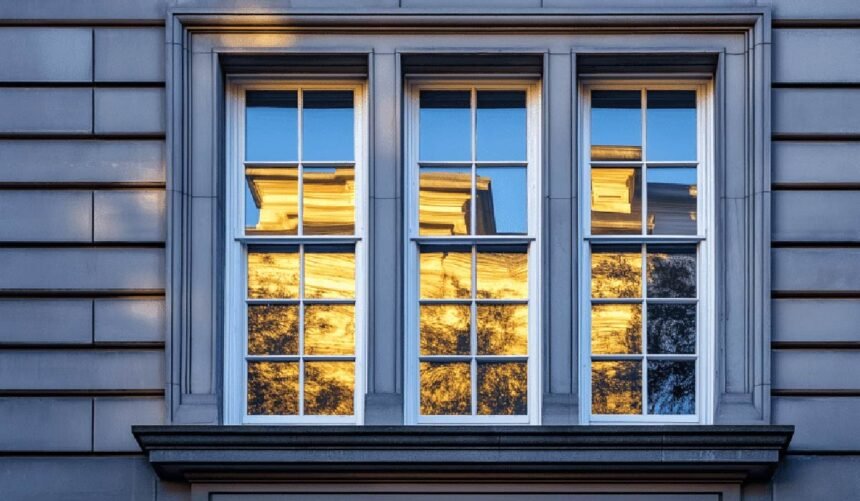Rising energy bills and environmental concerns are compelling homeowners across the UK to reconsider their property’s thermal performance. Traditional windows, though charming, may not be able to withstand the standard of insulation required nowadays, thus the heat escapes on colder days. Older sash window designs were never built with energy efficiency, therefore creating draughts and excessive heating expenses. Modern upgraded fixtures now have both classic aesthetics and energy-saving features that address these issues head-on. These advanced fixtures have high-tech glazing, accuracy in weatherproofing and long-lasting materials that hugely lower the heat transfer but still maintain heritage architectural designs.
Let’s see how modern timber sash windows improve energy efficiency.
Advanced glazing technology upgrades performance
Double and triple glazing have changed the way timber sash windows manage heat retention completely. The insulated glass units form thermal insulation barriers that prevent warmth from escaping through the panes, with argon gas fills enhancing this effect.
Key glazing features include:
- Reflective interior heat coating with low-emissivity
- Gas-filled cavities that slow thermal transfer between panes
- U-values as low as those of modern window systems
The frames themselves are also part of this performance, where hardwoods such as oak have natural insulation properties. Therefore, the installation of timber sash windows in London shows its benefits through lower heating costs and higher comfort levels.
Precision weatherproofing eliminates draughts
Air leakage causes higher energy wastage in older window installations, but modern manufacturing techniques have addressed these issues comprehensively. Bespoke timber sash windows now have multiple layers of weatherstripping at the intersection of sashes and frames. Brush pile seals, compression gaskets, and foam strips are used to develop airtight barriers against cold air infiltration.
The vertical sliding mechanism is given special attention, where specialised seals ensure that there are no gaps during movement, which were common with these designs in the past. This is where professional installation becomes important since a single millimetre of misalignment could weaken the whole weatherproofing system. Additionally, regular maintenance keeps these seals performing at their best.
Sustainable timber species improve insulation
Wood selection is one of the important factors that impacts both longevity and thermal efficiency in window construction. Accoya, a modified softwood, is known to have superior natural installation properties and dimensional stability compared to other products.
Premium timber options deliver:
- Cellular structures that trap air pockets and slow heat conduction
- Moisture resistance prevents warping, which creates gaps
- Superior thermal performance compared to aluminium and uPVC
These materials have inherent energy benefits themselves. The premium timber sash windows cost reflects these premium materials, although over time, energy-efficient expenses offset initial expenditure within a decade.
Proper installation maximises thermal benefits
Getting the installation right makes all the difference to how well your windows perform. Frame alignment must be perfect so weatherseals compress evenly at every contact point, preventing cold spots and air leaks. Expert fitters understand these requirements and work methodically through each stage:
- Checking frame squareness before fixing it into place
- Adding cavity insulation around perimeters to stop thermal bridging
- Applying quality sealant application that creates continuous air barriers
Professional installation protects your investment and guarantees the thermal performance you are paying for. The timber sliding sash windows prices quoted should clarify exactly what installation work is included. Thermal imaging surveys after completion can verify the work meets expected performance levels, identifying any areas needing adjustment before problems develop. Choosing experienced installers from an established timber window company makes a real difference to long-term results.
Regular maintenance preserves long-term efficiency
Looking after your windows properly keeps them working efficiently for decades. Annual inspections catch small problems before they turn into bigger issues that affect thermal performance. Look at the weatherseal condition each year, checking the strips compress properly when windows close. Timber sash window repairs fix worn seals, damaged panes, or mechanical issues that let heat escape. Paint protection needs refreshing every few years to stop moisture from getting into the wood and causing swelling.
Timber sash window standard sizes make them easier to replace components, but a custom-made installation might require custom-manufactured components. Quick attention to minor damage prevents energy efficiency from dropping over time.
Thus, through these multiple ways, modern timber sash windows improve energy efficiency in both old and new properties.
Conclusion
Every homeowner can get energy-efficient windows without sacrificing the character of period properties. In fact, upgrading to modern energy-efficient windows is the best for both your home and your wallet. The advances in glazing, weatherproofing systems, and sustainable timber species cut heat loss and ensure that period-style windows can fully achieve the modern thermal standards.
SJB Sash Windows, a trusted company, has earned its reputation by providing this very balance to homeowners across the capital. Their work ensures the architectural integrity of the buildings, with modern efficiency standards, which make a difference to comfort, aesthetic and environmental goals. Switch to timber sash windows and improve the energy efficiency in your home.







